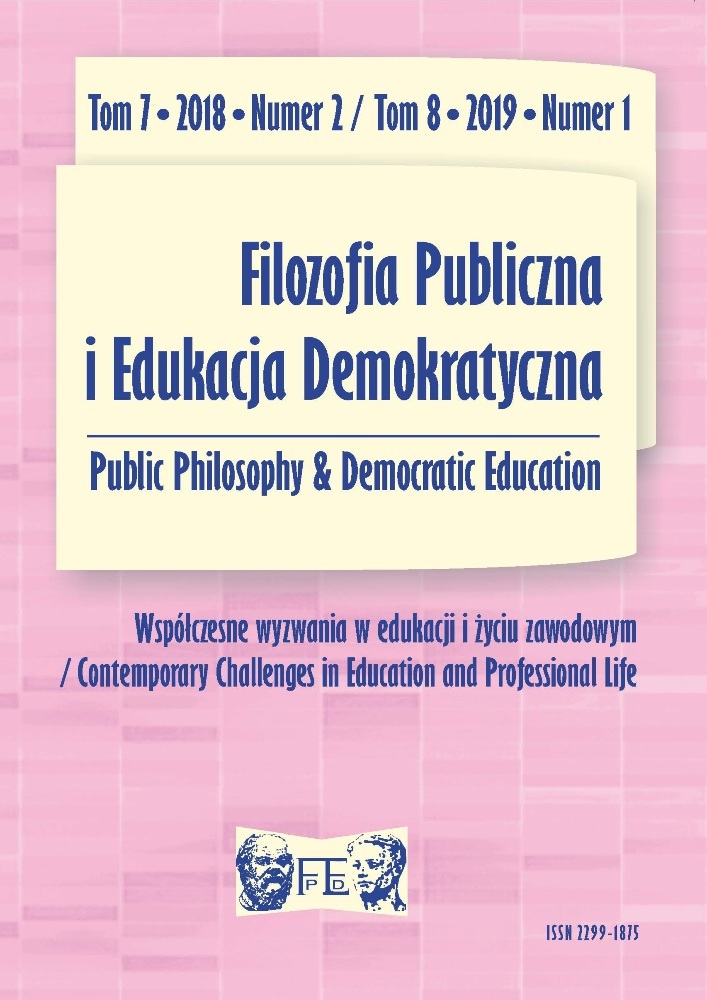Abstract
In this essay I want to concentrate on observers’ baseline assumptions on how we should be, or should have become in order to be accounted as morally ‘good.’ I will point out the significance for adult children who decided to not care for their elder parents. In three selected studies I show that observers, in trying to explain the decisions of others, or their moral development, respectively moral standing, misjudge or ignore their own implicit baseline assumptions. These assumptions are symptomatic of an implicit belief in all of us that wishes to see that ’good begets good’ for most of us, and infers, thereafter, that ‘bad begets bad’ for some who would show ‘no good.’ It is this implicit belief that guides the observers to make assumptions about the morally doubtful upbringing of a person, or their negative behavior that they wish to explain by flaws in the person’s personality. This biased belief says “it is this way, and only this way”, but, in fact, one cannot be certain about it. The baseline assumptions that observers bring along are basically the biased observer’s points of view which can be explained with the ultimate attribution error.
References
Bengtson V.L., Achenbaum W.A., The Changing Contract Across Generations, Aldine de Gruyter, New York 1993.
Bengtson V.L., Roberts R.E.L., “Intergenerational Solidarity in Aging Families: An Example of Formal Theory Construction”, Journal of Marriage and the Family 1991, vol. 53, pp. 856–870.
Courtois Ch.A., Ford J.D., Treating Complex Traumatic Stress Disorders: An Evidence-Based Guide, The Guilford Press, New York–London 2009.
Cruz, D.S., “A Simple Life”, E. Lyons (ed.). The New York Times, September 15, 2018, 4th ed.
Frankfurt H.G., “Freedom of the Will and the Concept of a Person”, The Journal of Philosophy 1971, vol. 68, no. 1 (January 14), pp. 5–20.
Gazzaniga M., The Ethical Brain: The Science of Our Moral Dilemmas, Harper Perennial, New York–London–Toronto–Sydney 2006.
Kahneman D., Thinking, Fast and Slow, Farrar, Straus & Giroux, New York 2011.
Kong J., Martire L.M., “Parental Childhood Maltreatment and the Later-Life Relationship with Parents”, Psychology and Aging 2019, vol. 34(7), pp. 900–911.
Lapsley D., “Moral Identity and Developmental Theory”, Human Development 2015, vol. 58, no. 3 (October 1), pp. 164–171, DOI:10.1159/000435926.
Lind G., How To Teach Morality, Logos, Berlin 2016.
Martin-Joy J.S., Malone J.C., Xing-Jia Cui, Hohansen P.-Ø., Hill K.P., Rahman O.M., Waldinger R.J., Vaillant G.E., “Development of Adaptive Coping From Mid to Late Life”, The Journal of Nervous and Mental Disease 2017, vol. 205, no. 9 (September), pp. 685–691, DOI: 10.1097/NMD.0000000000000711.
Mellema G.F., The Expectations of Morality, Rodopi, Amsterdam– New York 2004.
Narvaez D., “Seeds of Morality Must Be Planted Rightly”, Association for Moral Education, March 13, 2017.
Narvaez D., “Triune Ethics Theory and Moral Personality”, in: D. Narvaez, D.K. Lapsley (eds), Personality, Identity, and Character. Explorations in Moral Psychology (pp. 136–158), Cam-bridge University Press, Cambridge 2009.
Pettigrew T.F., “The Ultimate Attribution Error: Extending Allport’s Cognitive Analysis of Prejudice”, Personality and Social Psychology Bulletin 1979, vol. 5, no. 4, pp. 461–476, DOI: 10.1016/0022-1031(74)90059-6.
Tronto J., “Ethics of Care”, in: M.B. Holstein, P.B. Mitzen (eds), Ethics in Community-Based Elder Care, Springer, New York 2001.
License
Copyright (c) Authors retain copyright and publishing rights to their articles in this journal, granting the journal the right to distribute them under the terms of the CC BY-NC-ND 4.0
